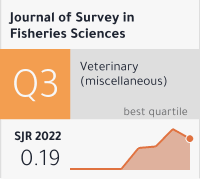Foot Mouth Disease Virus Affects The Immune Response Of The Host: An Overview
DOI:
https://doi.org/10.53555/sfs.v11i01.1951Keywords:
cellular immunity, antibody immunity, T lymphocytes, foot and mouth diseaseAbstract
Foot Mouth Disease Virus that spreads among animals with split hooves, such as cows, pigs, and sheep. It causes a disease that makes blisters in the mouth and feet of the animals, and can lead to huge losses for farmers when it breaks out. FMDV belongs to the Picornaviridae family of viruses, and it has a fast life cycle. It can infect and spread through the animals, and make new virus particles in less than seven days. FMDV is a virus that makes animals sick. It can be stopped by the body’s defense system, which has different parts. But FMDV has some tricks to avoid the defense system and keep making more viruses, as seen in the lab with mice. One of the virus parts, L pro, stops the cell from making IFN-β, which is a chemical that can fight the virus. This also stops the cell from making its own proteins. Another virus part, 3C pro, breaks a part of the cell that helps make RNA, which is needed for making proteins. FMDV infection causes a temporary decrease in lymphocytes in swine, but the process and the viral protein(s) behind this are unclear. In this review, we have discussed how FMDV interacts with various immune cells such as lymphocytes and antigen presenting cells and what happens as a result.









